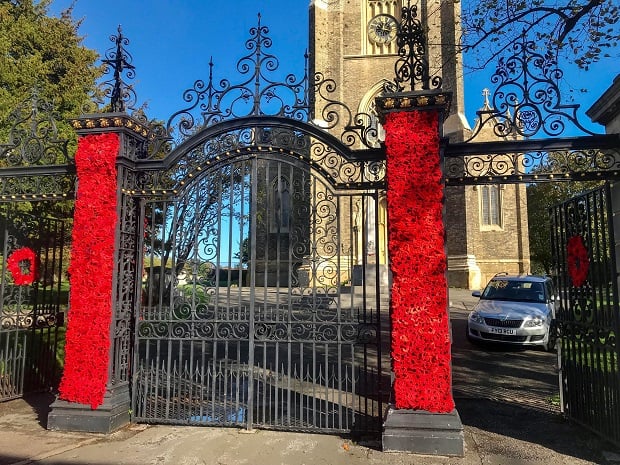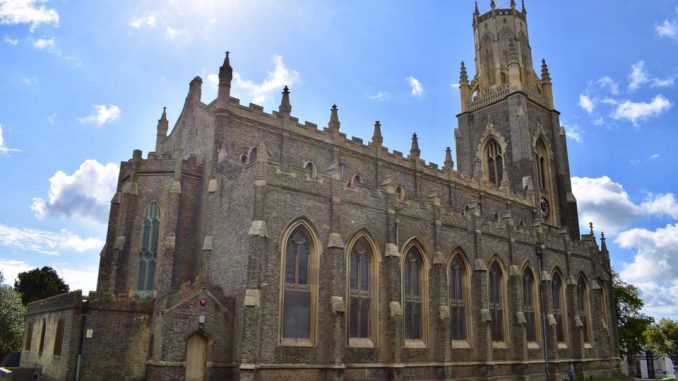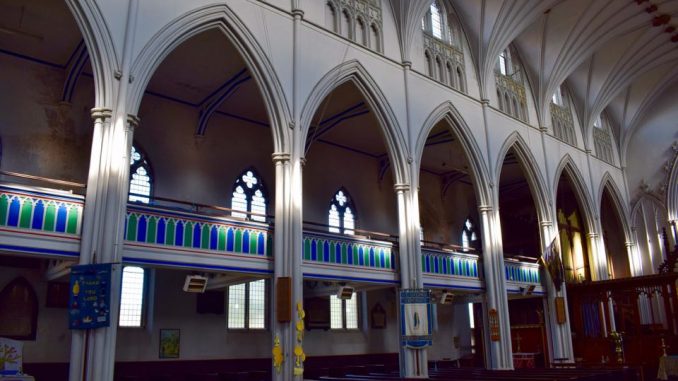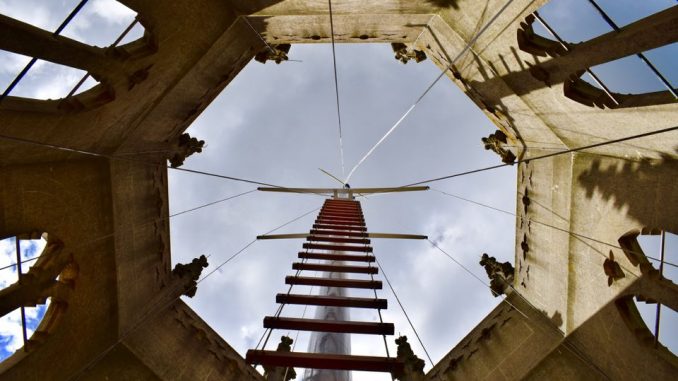
By work experience reporter Sophie Gallagher
A project to mark the 200th anniversary of St George’s Church in Ramsgate includes hopes of expanding the weekly community meal and Our Shop food club, allowing schools to make greater educational use of the buildings, increasing art and leisure uses and restoring the Grade I listed site with the aim of becoming a visitor destination.
St George’s Church, in Church Hill, is already at the centre of many community activities with valuable work including the free community meal which runs every Tuesday between 5.30pm-7pm and allows those who struggle with isolation to join together on a weekly basis to enjoy a cooked meal and conversation. Those that attend the meal range from the homeless and the vulnerable, to people who are lonely and want to meet others and enjoy a good ‘home cooked’ meal and conversation.

The food club, which was originally part of the Our Kitchen on the Isle of Thanet scheme, enables members to buy healthy food at cheaper prices. With the St George’s parish in the top 3% most deprived parishes in England it is a necessity for many residents.
The church holds regular services but is also a place for other events including Sunday school, study groups, prayer meetings, crafts groups, coffee mornings, a youth initiative and the venue for events such as the Christmas Tree Festival and concerts.

The St Georges Project 200 is a plan to regenerates the site in a sustainable way by 2027, in time for the 200th anniversary. Restoration of the landmark, which retains its 18th century architecture, gives the potential for it to be a tourist destination, says regeneration officer Jemima Brown.

Refurbishments will also allow the church to not only be used as the home of Christian faith within Ramsgate but also a communal area. Within this grand 200th anniversary plan, the church also plans for all construction to be as carbon neutral as possible and eco-friendly.
The cost of building the church ended up being £27,471-5s-2d. £9000 came from the Commissioners for building churches and £13,000 was a loan. Trinity House donated £1,000 towards the cost of the octagonal Lantern and the inhabitants of Ramsgate subscribed £2000, over £1,100 of which was pledged at the first meeting.

The foundation stone for St Georges was laid on 30th August 1824 and the church was completed in 1827 with the Archbishop of Canterbury, performing the ceremony on 23 October 1827.
The cost of the building was £27,471-5s-2p with £9000 from the Commissioners for building churches and a £13,000 loan. Trinity House donated £1,000 towards the cost of the octagonal Lantern and the residents of Ramsgate subscribed £2000.
The church served its community throughout the First and Second World Wars. During the Second World War the crypt beneath the church was used as a place for pupils to study while their schools weren’t in use. The crypt was also used a bomb shelter during the air attacks in 1940 for locals in the area who hadn’t evacuated.
St George’s survived the war but bomb damage had made the building unsafe to use and pews and furnishings were removed to the crypt.
In early 1943, some of the services resumed although many of the church windows had been blown out. The windows were re-glazed in clear glass or boarded up. Restoration work began in March 1946. The Dunkirk window, commemorating the evacuation of Dunkirk, was installed in 1961.
To find out more about Project 200 click here
Sophie is a Year 12 student studying media at Ursuline College in Westgate and aims to study the subject at university
Information sourced from St George’s Church

